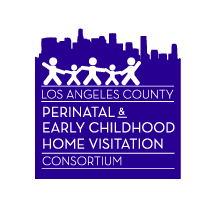Proposition 50: What California’s Redistricting Measure Means for Voters
California voters will vote on November 4, 2025, in a special statewide election featuring just one measure. Proposition 50 is a proposal that could temporarily reshape how California elects its members of Congress for part of the next decade.
What Prop 50 Would Do
If passed, Proposition 50 would let the State Legislature draw new congressional district maps beginning in 2026, replacing the maps created in 2021 by the California Citizens Redistricting Commission, the independent body voters established to prevent political influence in map-drawing. These new maps would remain in place for the 2026, 2028, and 2030 elections. After the 2030 U.S. Census, the independent commission would resume control and draw the next set of maps. Supporters frame Prop 50 as a proactive measure to ensure California’s representation keeps pace with population changes and to “counterbalance” redistricting moves in other states. On the other hand, critics argue that Proposition 50 would undermine California’s independent redistricting process by temporarily giving the Legislature, not the Citizens Redistricting Commission, control over drawing congressional maps for 2026–2030, a move they see as a partisan power grab that risks gerrymandering and weakening public trust.
What a “YES” Vote Means
California would adopt new congressional maps drawn by the Legislature for the 2026–2030 elections. The change would temporarily pause the independent commission’s role in congressional redistricting. The new maps could alter several competitive districts, shifting the political balance in Congress.
Supporters include:
Governor Gavin Newsom | California Democratic Party | President Barack Obama | Senators Alex Padilla & Adam Schiff | Speaker Emerita Nancy Pelosi | Planned Parenthood Affiliates of California | NAACP | Democratic House Leader Hakeem Jeffries | California’s Teachers Association | SEIU California | California Nurses Association | California Federation of Teachers | California Conference of Carpenters | Dolores Huerta Action Fund | See full list here.
What a “NO” Vote Means
California would keep using the current congressional maps drawn by the independent Citizens Redistricting Commission in 2021. The independent commission would retain full control of future map-drawing after 2030.
Opponents include:
Former Gov. Arnold Schwarzenegger | Republican congressional leaders | California Farm Bureau | California Farm Workers and Families | California Senior Alliance | California Small Business Association | California Taxpayers Association | See full list here.
The Debate Over Proposition 50
Supporters Say
Supporters believe it’s a necessary and timely update to California’s congressional maps. They argue that the state’s population has shifted significantly since the last redistricting in 2021, and waiting until after the 2030 Census would leave many communities underrepresented for years.
They view Prop 50 as a fairness and representation measure—a way to ensure that California’s maps reflect today’s demographics, not outdated data. With many other states redrawing their boundaries to gain political advantage, supporters see Prop 50 as a proactive step to protect California’s influence in Congress and maintain national balance.
They also emphasize that the measure is temporary and transparent: it allows the Legislature to draw new maps only for the 2026, 2028, and 2030 elections, before returning authority to the independent Citizens Redistricting Commission after the 2030 Census. The legislative process would include public hearings, map drafts, and accessible data to ensure accountability.
For supporters, Prop 50 is about representation, fairness, and keeping California’s voice strong in Washington. They believe it strengthens democracy by modernizing maps now rather than waiting another five years.
Critics Say
Prop 50 would suspend the Citizens Redistricting Commission’s authority over congressional districts for the 2026, 2028, and 2030 elections: giving that responsibility back to the State Legislature. In other words, instead of a neutral citizen commission drawing the congressional maps, elected politicians (members of the Legislature) would draw and approve them.
Opponents say Prop 50 is a political power move, arguing that it opens the door to gerrymandering under the guise of fairness. They maintain that California should uphold its model of nonpartisan, voter-approved redistricting instead of responding to partisan actions in other states.
Critics of Proposition 50 argue that it undermines California’s independent redistricting process, which voters created to prevent partisan influence in drawing political boundaries. They believe that allowing elected officials to draw their own districts sets a dangerous precedent and erodes public trust.
Critics also say that the temporary period may not remain temporary in practice (i.e. Legislature could push similar changes again).
Key Election Dates
October 6: County election offices begin mailing ballots
October 7: Ballot drop-off locations open
October 20: Last day to register to vote for the special election (same-day registration available at vote centers)
October 25: Vote centers open for early in-person voting
November 4: Election Day | Ballots must be postmarked by Election Day and received by November 11, 2025
Resources
